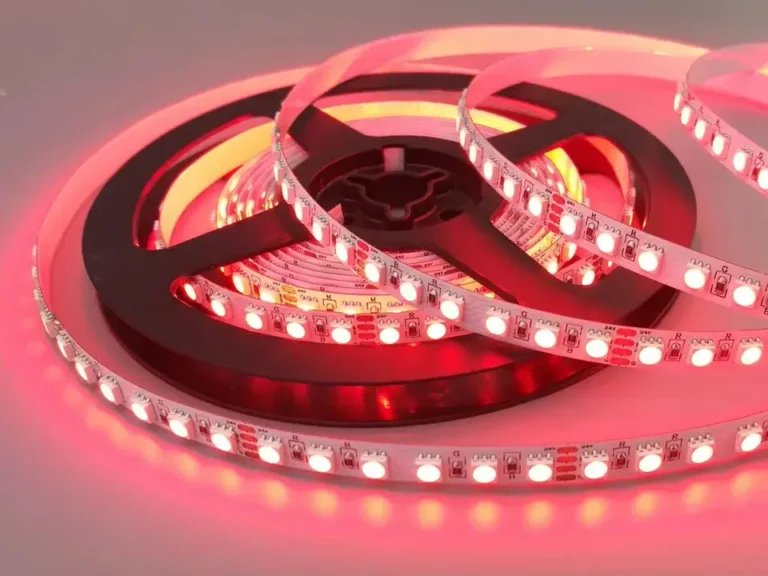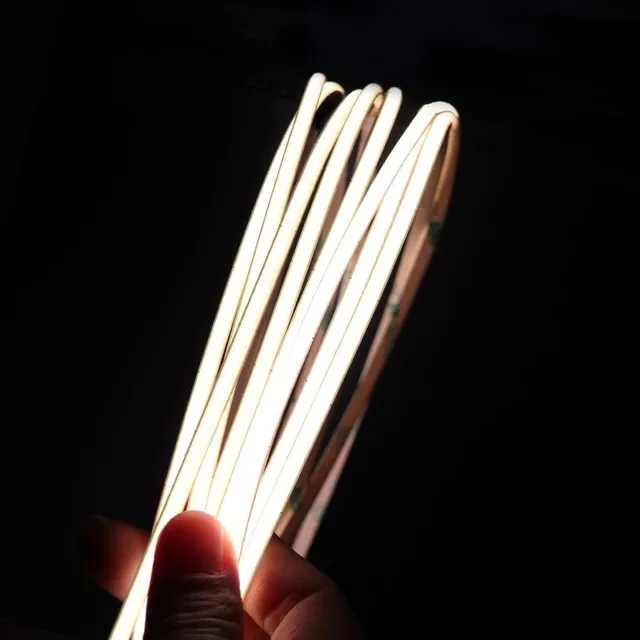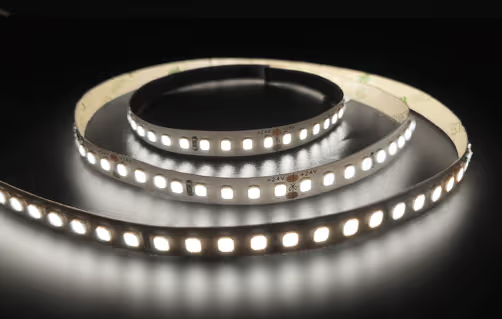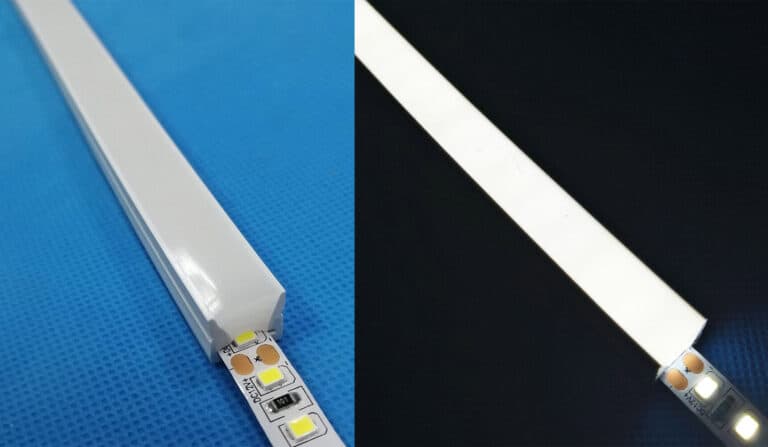Do tính linh hoạt và hiệu quả cao, đèn dải LED đã trở nên phổ biến rộng rãi trong các kịch bản chiếu sáng dân cư, thương mại và công nghiệp. Từ ánh sáng xung quanh đến ánh sáng chức năng chỉ số màu cao (CRI), chúng đã trở thành một lựa chọn phổ biến trong số các nhà thiết kế và kỹ sư.
Tuy nhiên, trong thực tế, mặc dù có nhiều ưu điểm của đèn dải LED, nhưng cũng có một số nhược điểm tiềm ẩn có thể ảnh hưởng đến hiệu suất và tính phù hợp của chúng đối với môi trường cụ thể, đặc biệt là trong các dự án thương mại quy mô lớn, nơi chúng có thể dẫn đến chậm trễ và chi phí vượt mức.
Tại Signitel, chúng tôi cam kết mang đến cho khách hàng những giải pháp chiếu sáng LED tốt nhất. Tuy nhiên, hiểu được những nhược điểm tiềm ẩn của dải đèn LED là rất quan trọng để đưa ra quyết định sáng suốt. Trong bài đăng trên blog này, chúng tôi sẽ khám phá nhược điểm của dải đèn LED, nguyên nhân cơ bản và cách giảm thiểu rủi ro thông qua lựa chọn và cải tiến, giúp bạn đưa ra quyết định sáng suốt hơn.
Nhược điểm của đèn dải LED
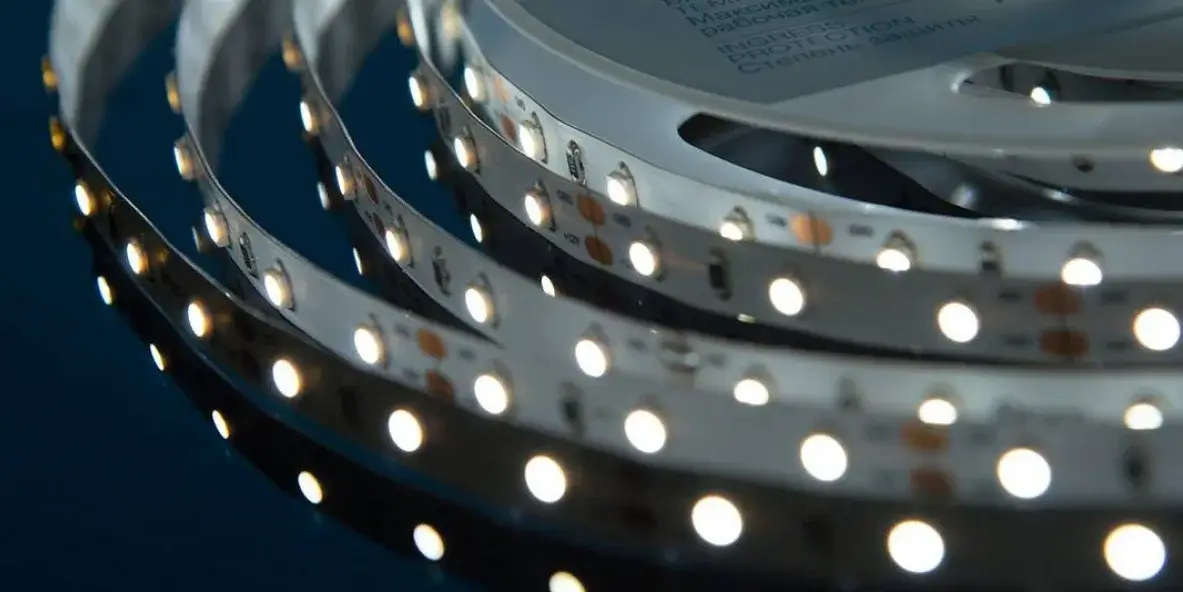
Trong khi đèn dải LED mang lại nhiều lợi thế, chẳng hạn như hiệu quả năng lượng và tính linh hoạt, điều quan trọng là phải xem xét và thừa nhận những hạn chế tiềm ẩn của chúng. Dù vậy, nên phát triển thói quen tốt và kiểm tra kỹ lưỡng tất cả các khía cạnh của đèn dải LED trước khi đầu tư. Bây giờ chúng ta hãy xem xét một số nhược điểm của đèn dải LED.
Chi phí ban đầu cao
Do công nghệ sản xuất tiên tiến và vật liệu được sử dụng trong dải đèn LED, chi phí trả trước của chúng thường cao hơn so với các giải pháp chiếu sáng truyền thống như đèn sợi đốt hoặc đèn huỳnh quang. Ngoài ra, chất lượng của dải đèn LED tăng lên khi cải thiện hiệu suất, chẳng hạn như độ sáng cao hơn trên mỗi watt hoặc kết xuất màu tốt hơn. Trong khi dải đèn LED có thể tiết kiệm chi phí thông qua việc cải thiện hiệu quả năng lượng và tuổi thọ kéo dài, thì khoản đầu tư ban đầu có thể là rào cản đối với một số người tiêu dùng.
Đề xuất cải tiến: Mặc dù bạn có thể lấy các dải đèn LED chi phí thấp hơn thông qua các kênh khác để đáp ứng yêu cầu dự án của bạn, nhưng các dải ánh sáng này có thể gây ra nhiều vấn đề và rủi ro hơn về chất lượng ánh sáng, độ an toàn, tuổi thọ và trải nghiệm của khách hàng.
Do đó, bạn có thể cân nhắc việc hợp tác với các nhà sản xuất trực tiếp nhà máy sản xuất đèn LED để giảm chi phí ban đầu thông qua việc mua hàng số lượng lớn. Đây là cách tốt nhất để có được sản phẩm chất lượng cao với giá cả cạnh tranh hơn mà không ảnh hưởng đến sự an toàn hoặc kết quả của dự án.
Độ nhạy tản nhiệt
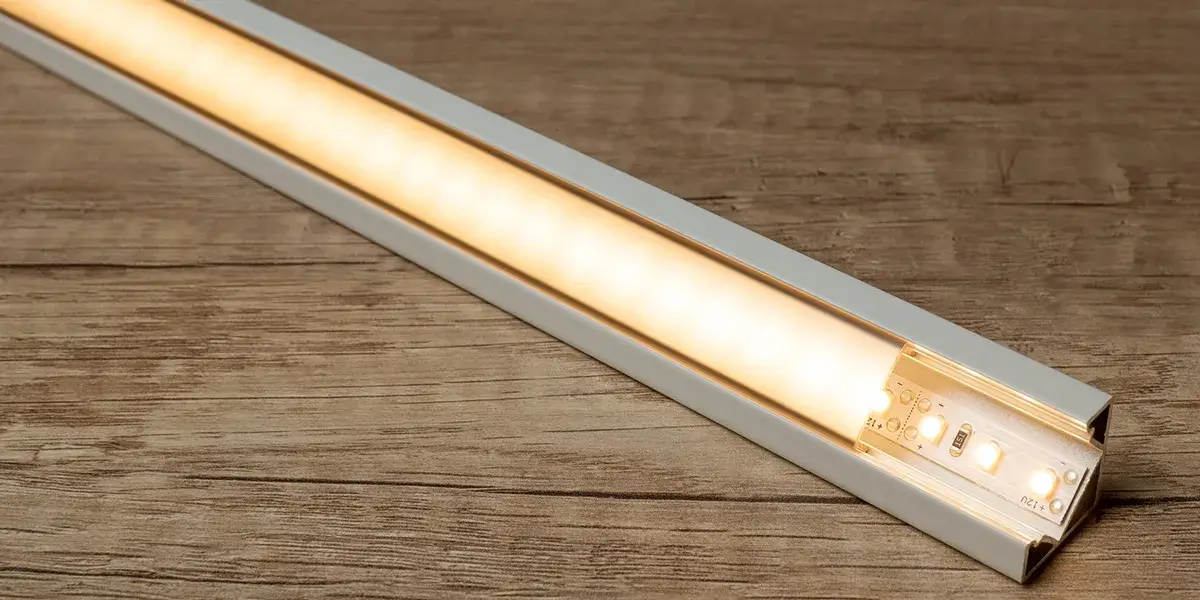
Dải đèn LED tạo ra nhiệt và không đủ nhiệt có thể dẫn đến các vấn đề khác, chẳng hạn như giảm sản lượng ánh sáng và tuổi thọ. Điều này là do nhiệt quá mức có thể làm hỏng chip LED, gây tăng phân rã ánh sáng, mờ và lão hóa nhanh. Vấn đề này đặc biệt nghiêm trọng trong không gian kín, thông gió kém; môi trường nhiệt độ cao; hoặc khi các dải ánh sáng được lắp đặt trên các vật liệu nhạy cảm với nhiệt.
Khuyến nghị cải tiến: Để đảm bảo tuổi thọ của dải đèn LED, việc tản nhiệt đầy đủ là điều cần thiết. Đảm bảo lắp đặt đúng cách và duy trì thông gió tốt và nhiệt độ hoạt động thích hợp. Kênh nhôm LED để tản nhiệt hiệu quả. Tránh đặt dải đèn LED gần nguồn nhiệt. Ngoài ra, bạn có thể giải quyết vấn đề này bằng cách sử dụng các sản phẩm chất lượng cao hoặc được chứng nhận, chẳng hạn như chất nền PCB dày hơn (4 oz., điển hình là 1-2 oz.) Hoặc những sản phẩm có chứng nhận UL / ETL. Đối với các phép đo nhiệt của dải LED, xin vui lòng đọc bài viết: Đo nhiệt của dải LED.
Nguy cơ ánh sáng xanh
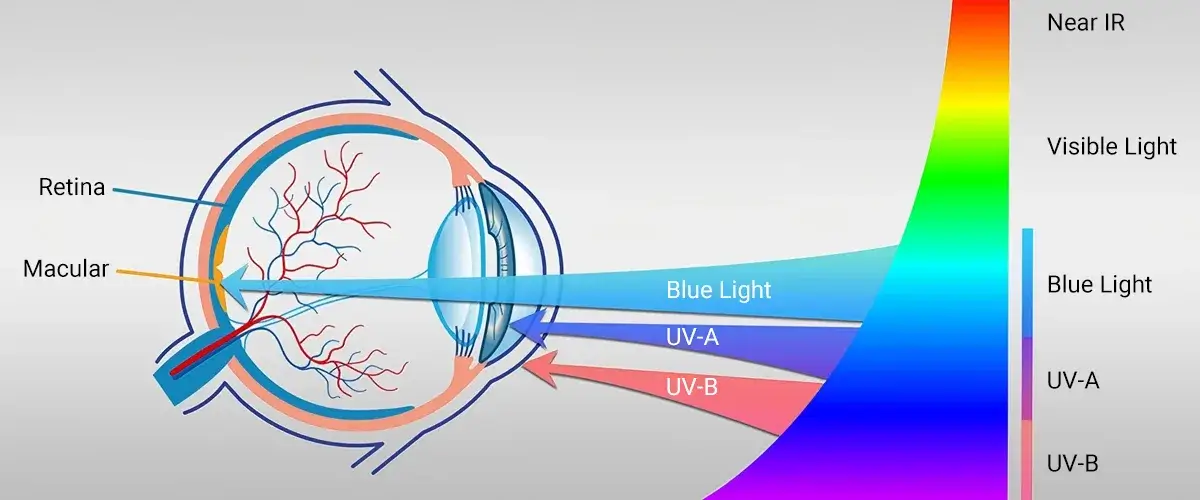
Một số dải đèn LED có nhiệt độ màu cao hơn (chủ yếu là đèn LED trắng mát) phát ra ánh sáng xanh. Ánh sáng xanh, còn được gọi là “Ánh sáng xanh bước sóng ngắn năng lượng cao”, là một chùm ánh sáng có cường độ tương đối cao, có bước sóng từ 400 đến 480 nanomet. Ánh sáng xanh có thể là nguyên nhân gây tổn thương quang hóa cho võng mạc và cũng có thể gây thoái hóa điểm vàng của da. Tiếp xúc lâu với ánh sáng xanh, đặc biệt là vào ban đêm, có thể làm gián đoạn giấc ngủ và gây mệt mỏi cho mắt.
Trên thực tế, hầu hết các loại đèn chiếu sáng LED đều phải đối mặt với vấn đề này. Nguyên nhân chính của các mối nguy hiểm ánh sáng xanh là cường độ ánh sáng xanh thay đổi theo nhiệt độ màu. Cường độ ánh sáng xanh tỷ lệ thuận với nhiệt độ màu. Nhiệt độ màu càng cao thì nguy cơ ánh sáng xanh càng lớn.
Đề xuất cải tiến: Kiểm soát nhiệt độ màu là một trong những phương pháp thích hợp để giảm nguy cơ ánh sáng xanh. Với mục đích này, bạn có thể chọn dải đèn LED có bức xạ ánh sáng xanh thấp hơn (như những dải có nhiệt độ màu dưới 4000K) hoặc sử dụng chúng ở mức độ vừa phải. Ở những nơi bạn dành thời gian dài, đặc biệt là vào ban đêm, bạn có thể sử dụng thêm các giải pháp chiếu sáng có tông màu ấm.
Tính nhất quán màu
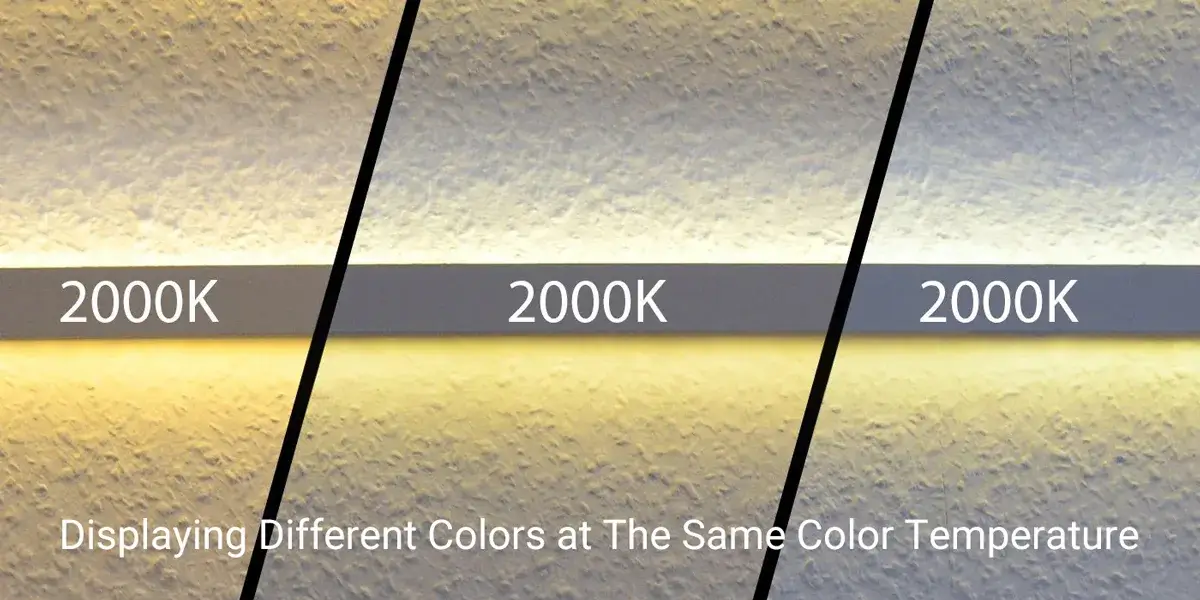
Dải đèn LED cấp thấp có thể biểu hiện sai lệch nhiệt độ màu đáng kể hoặc tông màu không nhất quán giữa các lô, hoặc thậm chí thay đổi màu sắc trong một dải duy nhất. Điều này là do các nhà sản xuất thiếu kiểm soát chặt chẽ các thử nghiệm nhiệt độ màu và kết xuất màu trong quá trình sản xuất. Sự khác biệt về nguyên liệu như chip và phosphos giữa các lô dẫn đến hiệu suất hiển thị màu không ổn định. Do đó, khi nhiều dải được sử dụng cùng nhau, những khác biệt này trở nên đáng chú ý hơn. Ngoài ra, các dải đèn LED với chỉ số kết xuất màu thấp có thể khiến các vật thể được chiếu sáng bởi đèn có màu không chính xác.
Khuyến nghị cải tiến: Chọn các sản phẩm đáng tin cậy, chất lượng cao và được chứng nhận từ các nhà sản xuất dải LED có uy tín, chẳng hạn như những nhà sản xuất có xếp hạng CRI tốt, giá trị SDCM thấp, phạm vi sản phẩm rộng, tùy chọn OEM hoặc giải pháp tùy chỉnh phù hợp với dự án của bạn.
SDCM là một số liệu rất quan trọng. Giá trị SDCM (độ lệch chuẩn của màu sắc phù hợp) càng thấp thì độ đồng nhất màu càng tốt. Khi mua hàng cho một dự án, cần kiểm tra nhiều lô mẫu để so sánh để đảm bảo rằng các thông số như nhiệt độ màu và CRI đáp ứng các yêu cầu trên tất cả các lô. Để biết thêm thông tin về SDCM, hãy đọc blog: Tất cả về SDCM cho đèn dải LED.
Khả năng tương thích làm mờ
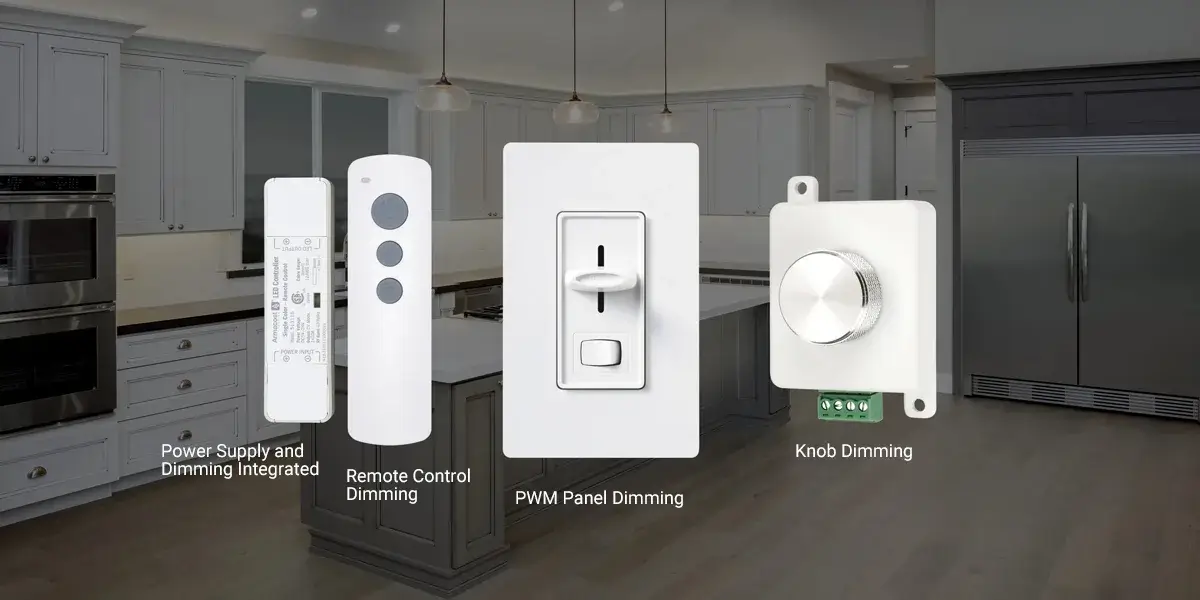
Thông thường, dải đèn LED yêu cầu nguồn điện và bộ điều chỉnh độ sáng tương thích để hoạt động bình thường. Nguồn điện không khớp hoặc không đủ hoặc bộ điều khiển / bộ điều khiển có thể gây nhấp nháy, tuổi thọ bị rút ngắn hoặc thậm chí làm hỏng dải đèn LED. Ví dụ, một số dải đèn RGB và nhiệt độ hai màu không tương thích với bộ điều chỉnh độ sáng tiêu chuẩn, dẫn đến việc kiểm soát hoặc hỏng hóc không nhất quán. Điều này là do dải LED và bộ điều chỉnh độ sáng từ các nhà sản xuất khác nhau sử dụng các giao thức điều khiển và tiêu chuẩn tín hiệu khác nhau, ngăn chúng giao tiếp và làm việc cùng nhau một cách hợp lý.
Khuyến nghị cải tiến: sử dụng Hệ thống điều khiển cấp công nghiệp chẳng hạn như DMX, DALI hoặc 0-10V. Các giao thức này cung cấp khả năng tương thích và ổn định tốt, đảm bảo giao tiếp đáng tin cậy giữa dải ánh sáng và bộ điều chỉnh độ sáng. Trước khi thực hiện dự án, tiến hành kiểm tra khả năng tương thích trên dải ánh sáng và bộ điều chỉnh độ sáng để đảm bảo chức năng điều khiển độ sáng thích hợp. Nếu cần thiết, hãy tham khảo ý kiến chuyên gia về ánh sáng.
Độ phức tạp của cài đặt tùy chỉnh

Mặc dù dải đèn LED dễ lắp đặt do khả năng chống dính và tính linh hoạt của chúng, tình hình thực tế có thể phức tạp hơn, đặc biệt là trong các dự án lắp đặt tùy chỉnh. Việc ghép nối nguồn điện và hệ thống dây điện không chính xác có thể dẫn đến các vấn đề về hiệu suất hoặc hư hỏng. Trong các dự án lắp đặt tùy chỉnh, dải đèn LED có thể yêu cầu cắt, hàn và đấu dây cho các bộ điều chỉnh độ sáng và nguồn điện tương thích. Đối với những người không có kinh nghiệm về điện, điều này có thể yêu cầu lắp đặt chuyên nghiệp, điều này làm tăng chi phí tổng thể.
Đề xuất cải tiến: Đầu tiên, đảm bảo rằng nguồn điện đáp ứng các yêu cầu về điện áp và công suất của đèn dải LED. Thứ hai, bạn có thể sử dụng Đầu nối đèn LED Để đơn giản hóa các kết nối, giảm thời gian và công sức cần thiết để hàn các điểm kết nối này. Cuối cùng, đối với những người đam mê, bạn sẽ cần sự hỗ trợ chuyên nghiệp từ thợ điện, thợ lắp đặt LED, nhà tích hợp hoặc nhà thầu. Điều này đảm bảo an toàn, độ tin cậy và lắp đặt đúng cách.
Nếu bạn muốn tìm hiểu thêm và tự cài đặt chúng, hãy đọc các blog liên quan sau:
Hướng dẫn đầy đủ về cách đấu dây đèn LED
Bạn có thể kết nối nhiều đèn dải LED không?
Cách kết nối đèn dải LED với nguồn điện
Độ bền keo
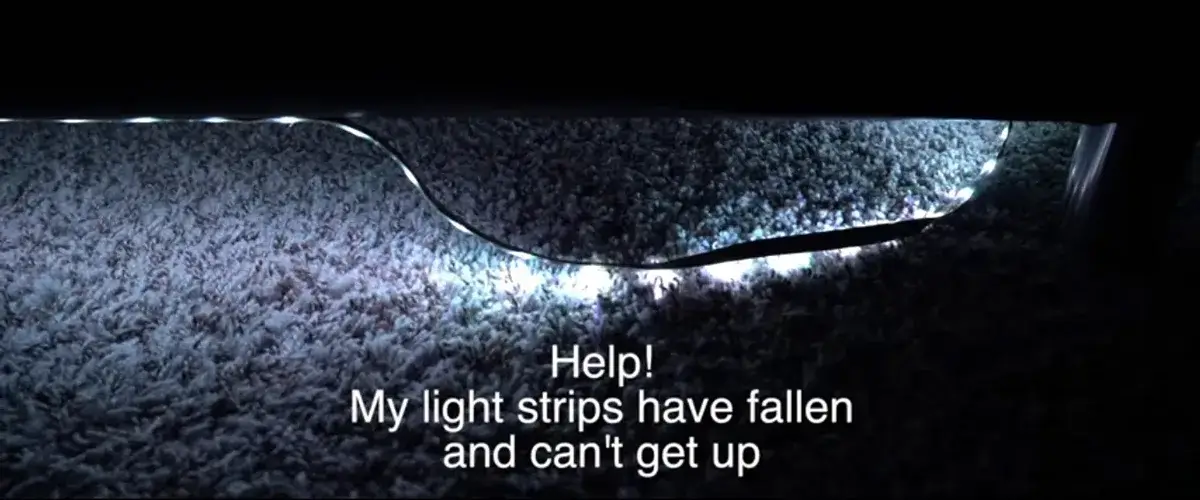
Lớp đệm dính trên các dải đèn LED thường xuống cấp theo thời gian, đặc biệt là ở môi trường nhiệt độ cao, bụi / ẩm hoặc trên bề mặt gồ ghề, dẫn đến hỏng và khiến các dải ánh sáng bị tách ra. Điều này không chỉ ảnh hưởng đến hiệu suất chiếu sáng mà còn gây ra những rủi ro về an toàn. Ngoài ra, keo dán tiêu chuẩn có độ bám và độ bền hạn chế, không đáp ứng được nhu cầu sử dụng lâu dài. Hơn nữa, nhiều dải đèn LED giá rẻ, chất lượng thấp thường sử dụng lớp nền kết dính kém chất lượng để giảm chi phí.
Đề xuất cải tiến: Ngoài việc sử dụng Băng VHB cấp công nghiệp, các phương pháp cài đặt phụ trợ như kẹp và dấu ngoặc có thể được áp dụng. Kẹp và giá đỡ cung cấp thêm lực giữ, đảm bảo dải ánh sáng vẫn được lắp đặt an toàn ngay cả trong môi trường khắc nghiệt. Trước khi lắp đặt, bề mặt lắp đặt phải được làm sạch và chuẩn bị để đảm bảo nó bằng phẳng và khô, tăng cường độ bền liên kết của chất kết dính. Để được hướng dẫn chọn lớp nền phù hợp, vui lòng tham khảo blog: Băng keo hai mặt tốt nhất cho đèn dải LED là gì?
điện áp rơi dài

Khi các dải đèn LED vượt quá 5 mét hoặc 10 mét với nguồn điện một đầu, các đầu có thể hiển thị mờ hoặc chuyển màu đáng chú ý, ảnh hưởng đến tính đồng nhất của ánh sáng tổng thể và tính thẩm mỹ. Điều này là do bản thân dây có điện trở, và khi khoảng cách cấp điện tăng, sự mất dòng điện trong dây tăng dần, làm cho điện áp ở cuối giảm, dẫn đến việc không đủ dòng điện cho đèn LED hoạt động, dẫn đến giảm độ sáng và chuyển màu.
Đề xuất cải tiến: Sử dụng nguồn điện kép, cấp nguồn từ cả hai đầu dải đèn LED đồng thời có thể làm giảm hiệu quả sự sụt giảm điện áp do điện trở dây dẫn. Ngoài ra, tăng thêm dây đo để chọn dây có điện trở thấp hơn, giảm tổn thất dòng điện. Ngoài ra, công suất bơm mỗi 5 mét là một giải pháp hiệu quả để đảm bảo rằng tất cả các phần của dải nhận điện áp và dòng điện ổn định. Để biết thêm thông tin về nguyên nhân gây sụt áp và giải pháp, mời bạn đọc bài viết: Giảm điện áp trên dải LED: nguyên nhân và giải pháp.
Kết luận: Thừa nhận nốt thứ hai trongrawbacks và nốt đôHoose A rcó thể tha thứ Ssự pha trộn
Dải LED, là một sản phẩm được sử dụng rộng rãi trong ánh sáng hiện đại, không phải là không có khuyết điểm của chúng. Mặc dù luôn có một số nhược điểm, chúng ta phải thừa nhận chúng vì luôn có cách để giải quyết chúng. Tuy nhiên, ưu điểm của dải đèn LED vượt xa nhược điểm, vì vậy không cần phải lo lắng quá mức.
Khi đọc bài viết này, bạn đã hiểu sâu hơn về các vấn đề có thể phát sinh trong quá trình sử dụng dải đèn LED thực tế và nguyên nhân cơ bản của chúng, có thể giúp chúng tôi giảm thiểu rủi ro trong các dự án thương mại và tránh các vấn đề như không đủ độ sáng hoặc chậm trễ do làm lại. Nếu bạn có thêm câu hỏi về việc sử dụng đèn LED dải, bạn có thể đọc blog của chúng tôi [Đèn LED dải đèn LED thường gặp và hướng dẫn giải pháp] để xem liệu nó có giải quyết được mối quan tâm của bạn hay không.
SigniLited cam kết mang lại độ tin cậy cao, tính nhất quán cao Dải đèn LED sản phẩm phục vụ các dự án thương mại. Với công nghệ tiên tiến, kiểm soát chất lượng nghiêm ngặt và dịch vụ hậu mãi toàn diện, chúng tôi cung cấp hỗ trợ đầy đủ cho các dự án của bạn. Vui lòng liên hệ với chúng tôi để có mẫu kỹ thuật hoặc khuyến nghị lựa chọn sản phẩm để hợp tác tạo ra giải pháp chiếu sáng lý tưởng.
